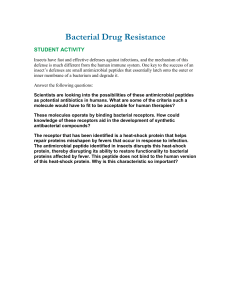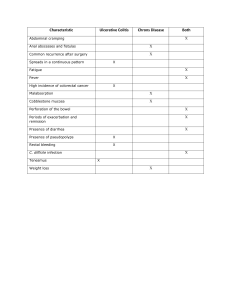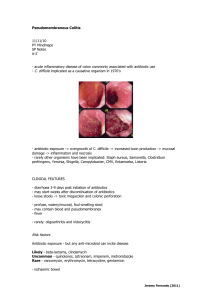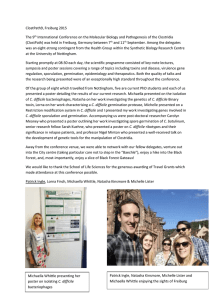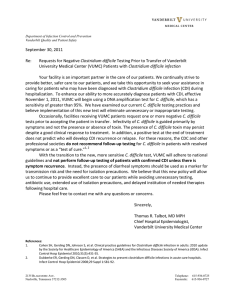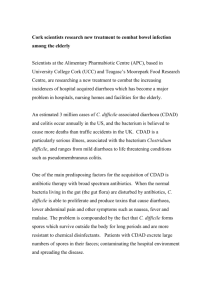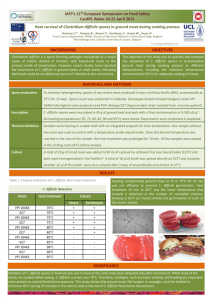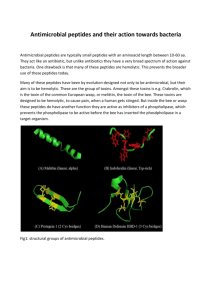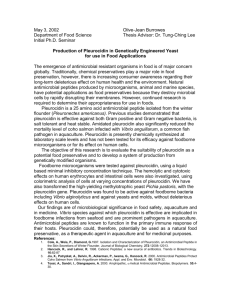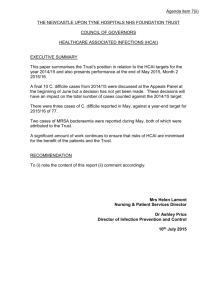Resistance of C. difficile to Cationic Antimicrobial Peptides
advertisement
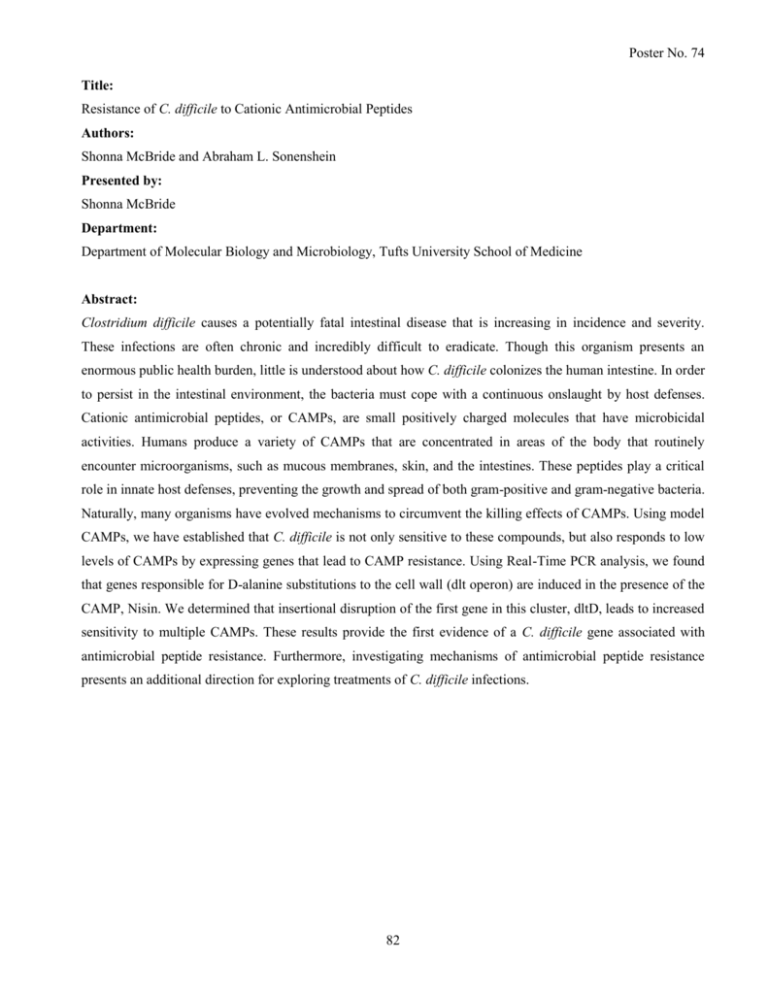
Poster No. 74 Title: Resistance of C. difficile to Cationic Antimicrobial Peptides Authors: Shonna McBride and Abraham L. Sonenshein Presented by: Shonna McBride Department: Department of Molecular Biology and Microbiology, Tufts University School of Medicine Abstract: Clostridium difficile causes a potentially fatal intestinal disease that is increasing in incidence and severity. These infections are often chronic and incredibly difficult to eradicate. Though this organism presents an enormous public health burden, little is understood about how C. difficile colonizes the human intestine. In order to persist in the intestinal environment, the bacteria must cope with a continuous onslaught by host defenses. Cationic antimicrobial peptides, or CAMPs, are small positively charged molecules that have microbicidal activities. Humans produce a variety of CAMPs that are concentrated in areas of the body that routinely encounter microorganisms, such as mucous membranes, skin, and the intestines. These peptides play a critical role in innate host defenses, preventing the growth and spread of both gram-positive and gram-negative bacteria. Naturally, many organisms have evolved mechanisms to circumvent the killing effects of CAMPs. Using model CAMPs, we have established that C. difficile is not only sensitive to these compounds, but also responds to low levels of CAMPs by expressing genes that lead to CAMP resistance. Using Real-Time PCR analysis, we found that genes responsible for D-alanine substitutions to the cell wall (dlt operon) are induced in the presence of the CAMP, Nisin. We determined that insertional disruption of the first gene in this cluster, dltD, leads to increased sensitivity to multiple CAMPs. These results provide the first evidence of a C. difficile gene associated with antimicrobial peptide resistance. Furthermore, investigating mechanisms of antimicrobial peptide resistance presents an additional direction for exploring treatments of C. difficile infections. 82
